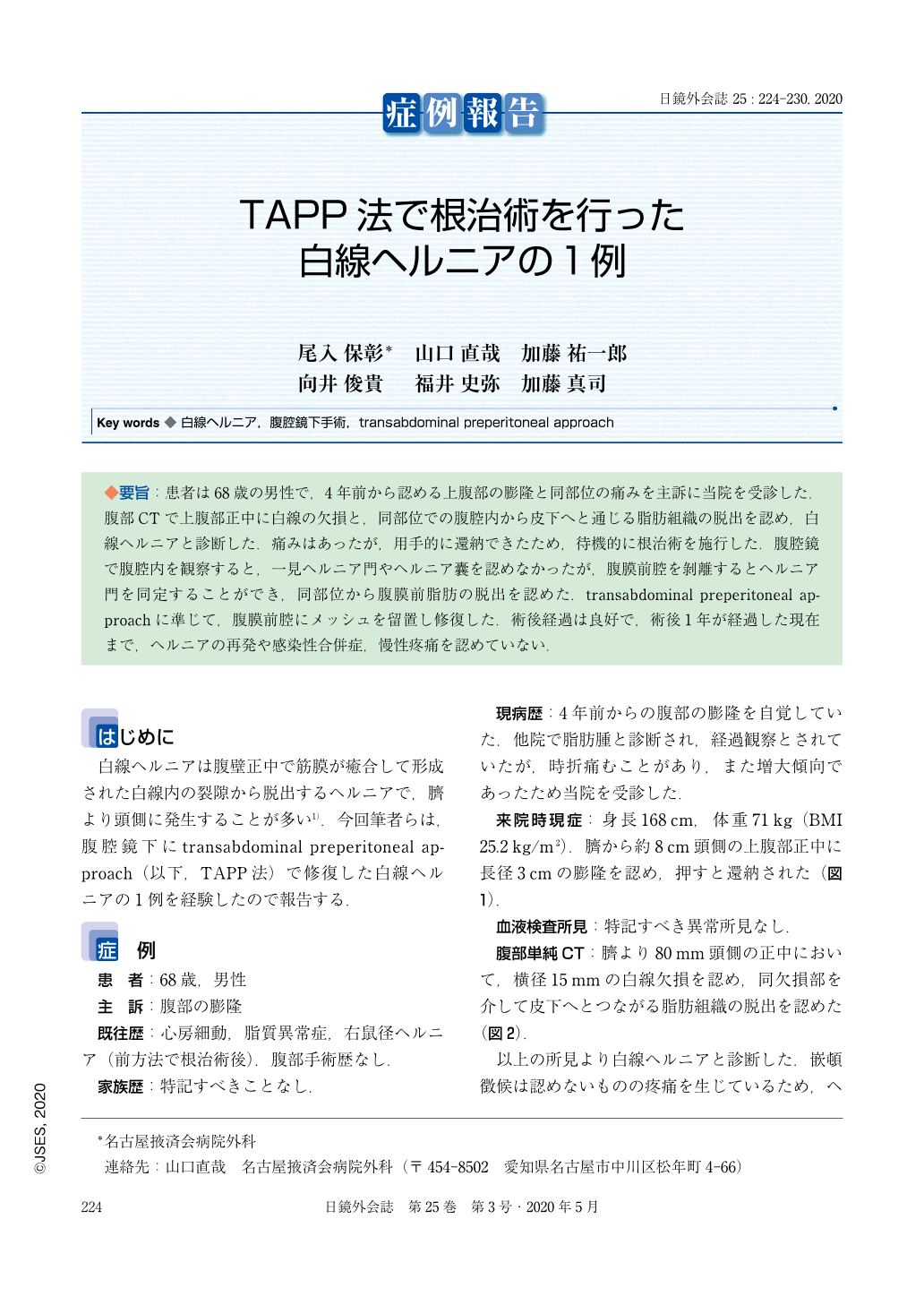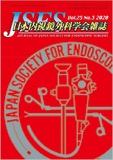Japanese
English
- 有料閲覧
- Abstract 文献概要
- 1ページ目 Look Inside
- 参考文献 Reference
◆要旨:患者は68歳の男性で,4年前から認める上腹部の膨隆と同部位の痛みを主訴に当院を受診した.腹部CTで上腹部正中に白線の欠損と,同部位での腹腔内から皮下へと通じる脂肪組織の脱出を認め,白線ヘルニアと診断した.痛みはあったが,用手的に還納できたため,待機的に根治術を施行した.腹腔鏡で腹腔内を観察すると,一見ヘルニア門やヘルニア囊を認めなかったが,腹膜前腔を剝離するとヘルニア門を同定することができ,同部位から腹膜前脂肪の脱出を認めた.transabdominal preperitoneal approachに準じて,腹膜前腔にメッシュを留置し修復した.術後経過は良好で,術後1年が経過した現在まで,ヘルニアの再発や感染性合併症,慢性疼痛を認めていない.
A 68-year-old man presented with subcutaneous epigastric swelling, which had been present for 4 years, but recently became mildly painful. Abdominal computed tomography showed a defect in the linea alba in the midline of the upper abdomen and protrusion of fat tissue into the subcutaneous layer. We diagnosed the patient with epigastric hernia, which was reducible; hence, we performed elective laparoscopic surgery. In the beginning of the laparoscopic operation, neither the hernia orifice nor the hernia sac could be found. However, after dissecting the preperitoneal cavity in the upper abdomen, we could detect the hernia orifice in the linea alba with protrusion of the preperitoneal fat of the round ligament of the liver. Hernia repair was performed with placement of a mesh using the transabdominal preperitoneal (TAPP) technique. The postoperative course was uneventful, and no signs of recurrence of hernia or chronic pain were detected for 1 year. Mesh repair with TAPP technique would be useful in patients with epigastric hernia, especially those in whom the hernia orifice or sac could not be found on laparoscopy.

Copyright © 2020, JAPAN SOCIETY FOR ENDOSCOPIC SURGERY All rights reserved.


